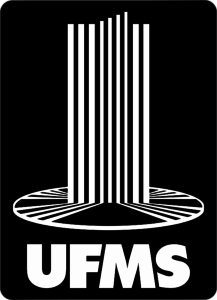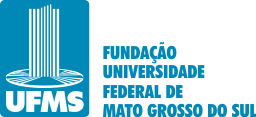Use este identificador para citar ou linkar para este item:
https://repositorio.ufms.br/handle/123456789/7167| Tipo: | Tese |
| Título: | INTERFACES ENTRE A TOPONÍMIA BRASILEIRA E A PARAGUAIA EM ÁREA DE FRONTEIRA: PERSPECTIVA ETNODIALETOLÓGICA |
| Autor(es): | Suely Aparecida Cazarotto |
| Primeiro orientador: | Aparecida Negri Isquerdo |
| Resumo: | Esta pesquisa teve como objeto de investigação os topônimos dos acidentes físicos e humanos, urbanos e rurais, de Ponta Porã/Mato Grosso do Sul/Brasil e de Pedro Juan Caballero/Amambay/Paraguay com a finalidade de descrever a matriz toponímica das áreas investigadas, considerando a motivação, a língua de origem e a estrutura formal dos topônimos. Também se propôs a realizar um estudo comparativo entre os topônimos pertencentes aos dois universos geográficos selecionados com vistas a verificar em que medida a história social, econômica e política que singulariza essa área de fronteira reflete-se na toponímia local. Duas hipóteses orientaram a pesquisa: a) há marcas da Guerra do Paraguai na toponímia de Ponta Porã/BR e em Pedro Juan Caballero/PY, fronteira entre Brasil e Paraguai; b) existe um continuum toponímico que ultrapassa os limites geográficos na área investigada que é permeada por diferentes estratos linguísticos: o espanhol, o guarani (línguas oficiais do Paraguai) e o português (língua oficial do Brasil). A análise dos dados foi orientada pelos princípios teórico-metodológicos da Toponímia, fundamentalmente, o modelo teórico proposto por Dick (1990a, 1990b, 1996a), e de disciplinas afins. A análise dos topônimos urbanos, tanto de Ponta Porã quanto de Pedro Juan Caballero, revelou a predominância dos antropotopônimos, reafirmando, nessas localidades, uma característica da toponímia urbana em geral. Os antropotopônimos femininos alçaram baixa produtividade: 15% em Ponta Porã e 14% em Pedro Juan Caballero. Entretanto, na cidade paraguaia, as mulheres que têm seus nomes gravados na toponímia são descritas com mérito, em documento oficial, enquanto na cidade brasileira configuram-se como “ilustres desconhecidas”. Já a toponímia rural, física e humana, evidenciou, em sua maioria, nomes descritivos do ambiente físico, destacando-se como mais produtivos os fitotopônimos, os hidrotopônimos, os zootopônimos e os litotopônimos, em ambas as localidades. Destaque-se, nesse cenário, a ocorrência de 22 hagiotopônimos (17,6%), dentre os acidentes físicos rurais de Ponta Porã, e seis topônimos dos bairros de Pedro Juan Caballero (40%), demonstrando que tanto o Brasil quanto o Paraguai ‘nasceram sob o signo da fé’. Sobre a língua de origem em todo o universo toponímico investigado, a pesquisa apontou a predominância de topônimos de origem portuguesa em Ponta Porã e espanhola em Pedro Juan Caballero, com relevância, ainda, para o tupi, no município brasileiro, e para o guarani, no paraguaio. Foi confirmada a hipótese de que há na toponímia de Ponta Porã e de Pedro Juan Caballero elementos toponímicos que refletem marcas da Guerra, com índices de produtividade bem distintos: 15% na toponímia paraguaia e 2% na brasileira. Os dados evidenciaram também amostras de continuum toponímico no universo investigado. Uma pesquisa maior, ao longo de toda a fronteira Brasil/Paraguai, poderá (ou não) refutar essa tendência. |
| Abstract: | This research had as the investigation object the toponyms of the physical and human, urban and rural accidents of Ponta Porã/Mato Grosso do Sul/Brazil and Pedro Juan Caballero/Amambay/Paraguay with the purpose of describing the toponymic matrix of the investigated areas, considering the motivation, the language of origin and the formal structure of the toponyms. Besides, it proposed to carry out a comparative study between the toponyms belonging to the two geographic universes selected in order to verify how the social, economic and political history that distinguishes this border area is reflected in the local toponymy. Two hypotheses guided the research: a) there are marks of the Paraguayan War in the toponymy of Ponta Porã/BR and in Pedro Juan Caballero/PY, border between Brazil and Paraguay; b) there is a toponymic continuum that surpasses the geographical limits in the investigated area, permeated by different linguistic strata: Spanish, Guarani (official Paraguay languages) and Portuguese (official language of Brazil). The data analysis was guided by the theoretical and methodological principles of Toponymy, fundamentally the theoretical model proposed by Dick (1990a, 1990b, 1996a), and related disciplines. The analysis of urban toponyms, of both Ponta Porã and Pedro Juan Caballero, revealed the predominance of anthropotoponyms, reaffirming, in these localities, a characteristic of urban toponymy in general. The female an anthropotoponyms obtained low productivity, being 15% in Ponta Porã and 14% in Pedro Juan Caballero. However, in the Paraguayan city, women who have their names engraved in toponymy are described with merit, in official document, while in the Brazilian city they are only "illustrious unknown". On the other hand, the rural, physical and human toponymy evidenced, in the majority, descriptive names of the physical environment, emphasizing as more productive the phytotoponyms, the hydrotoponyms, the zootoponyms and the litotoponyms in both localities. In this scenario, emphasis was given to the occurrence of 22 hagiotoponyms (17.6%), among the rural physical accidents in Ponta Porã, and six toponyms in the districts of Pedro Juan Caballero (40%), demonstrating that Brazil and Paraguay were born under the ‘sign of faith’. On the origin language in the entire toponymic universe investigated, the research pointed out the predominance of Portuguese origin in Ponta Porã and Spanish in Pedro Juan Caballero, with relevance also for the Tupi in the Brazilian municipality and Guarani in the Paraguayan one. It was confirmed the hypothesis that there are in the toponymy of Ponta Porã and Pedro Juan Caballero toponymic elements that reflect War marks, with emphasis for the Paraguayan locality, with 15%, while in Brazil, only 2%. There are small toponymic continuum indices in the investigated universe, and a larger survey, along the entire Brazil-Paraguay border, may (or may not) refute this trend. |
| Palavras-chave: | Toponímia Ponta Porã/Brasil Pedro Juan Caballero/Paraguay interfaces. |
| País: | Brasil |
| Editor: | Fundação Universidade Federal de Mato Grosso do Sul |
| Sigla da Instituição: | UFMS |
| Tipo de acesso: | Acesso Restrito |
| URI: | https://repositorio.ufms.br/handle/123456789/7167 |
| Data do documento: | 2019 |
| Aparece nas coleções: | Programa de Pós-graduação em Letras (Campus de Três Lagoas) |
Arquivos associados a este item:
Não existem arquivos associados a este item.
Os itens no repositório estão protegidos por copyright, com todos os direitos reservados, salvo quando é indicado o contrário.

